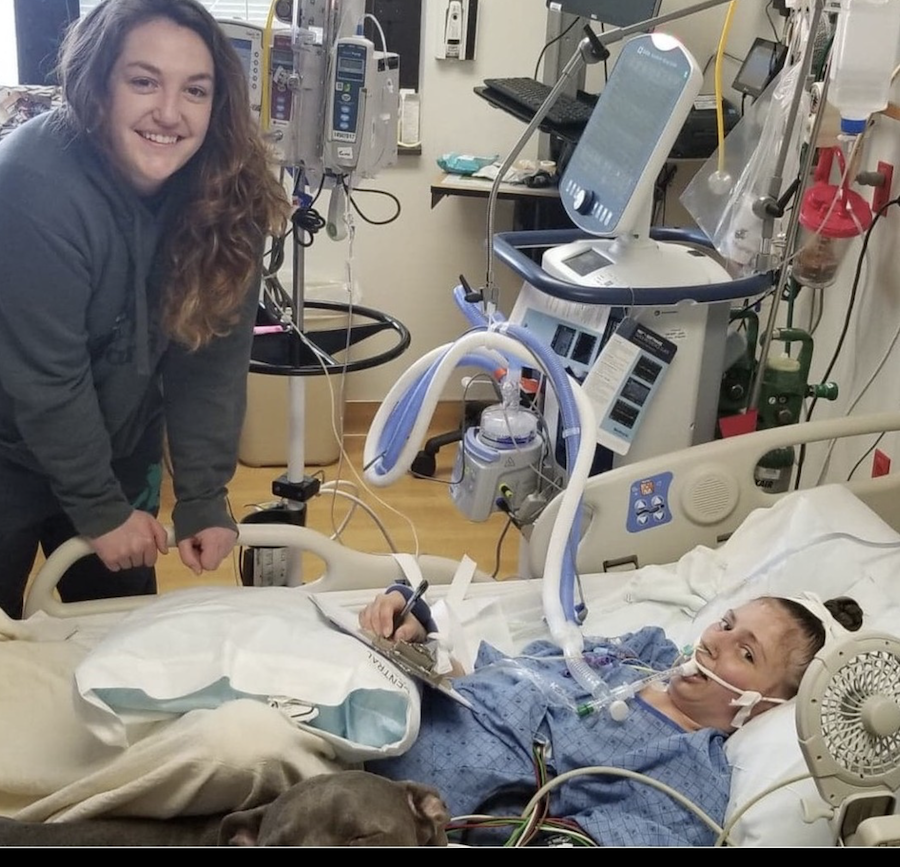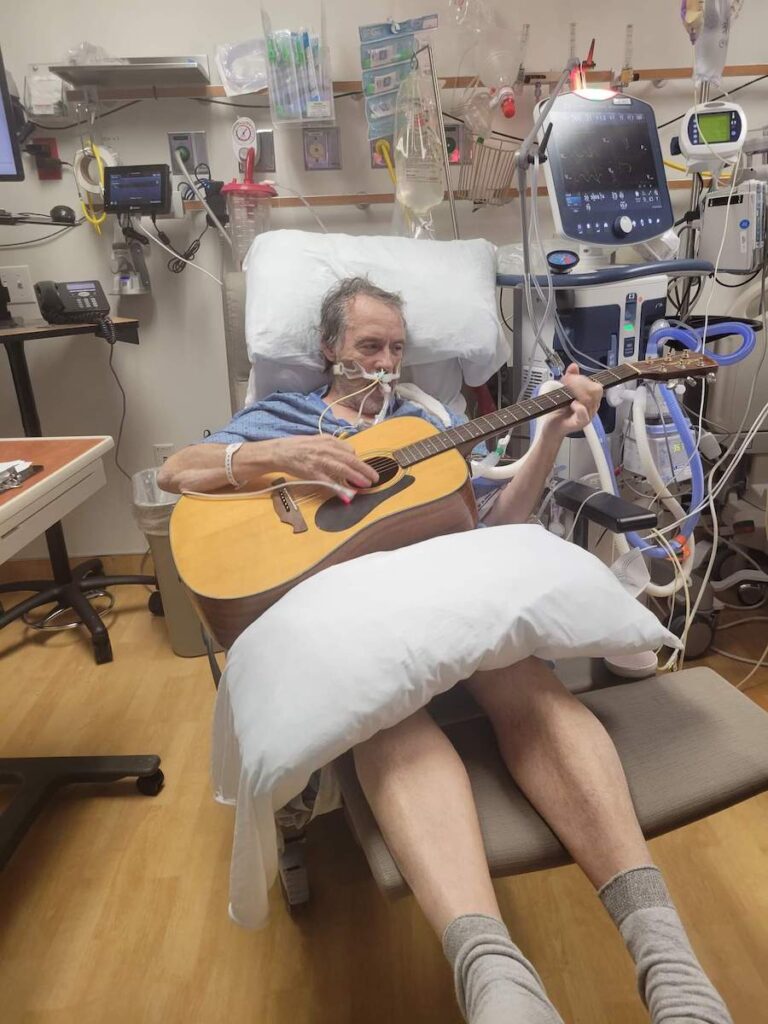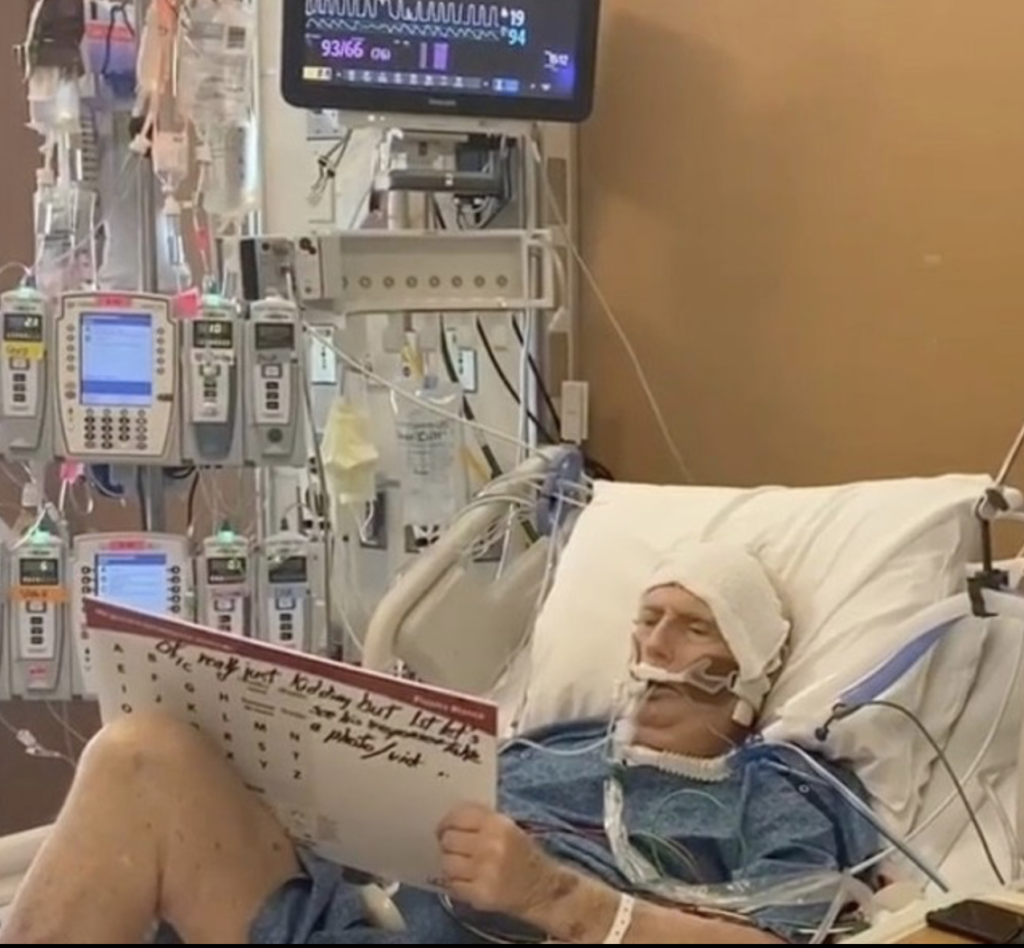“Would you be willing to walk intubated patients on ventilators?” my future nurse manager asked me during my initial interview.
As a new nurse, I failed to fully understand the importance of this question and eagerly answered, “Yes! Of course! Teach me everything.”
During my first few years working as a nurse in an Awake and Walking ICU I was innocently unaware of the significance of their mastery of the ABCDEF bundle, otherwise known as the ICU liberation bundle.
For that high acuity medical-surgical and COVID intensive care unit, it is a standard of care to have almost all intubated patients on mechanical ventilation awake, communicative, autonomous, and typically walking during critical illness.
Unless specific exceptions were present, almost all patients were allowed to wake up after intubation and remain free of sedation.
As a result of my training, I believed it was normal to have patients successfully extubate after even weeks of high ventilator settings, and then walk out of the ICU doors the next day and discharge home shortly after.
Working in that environment, I considered walking intubated patients to be as routine as giving an antibiotic.
I expected to communicate and connect with my patients. I knew their favorite songs, foods, hobbies, and what goals they had for their care. I was fulfilled in my career and so grateful I had become a critical care nurse.
Looking back now, it reminds me of all the patients whom I got to know during my time in the Awake and Walking ICU, and other ventilated patients who were brought to my attention by clinicians in other Awake and Walking ICUs.
This includes people like Megan Wakley, who can be seen in the photo below writing to her sister while intubated on mechanical ventilation for alcoholic leukopenic pneumococcal sepsis and cavitary pneumonia.

Or the gentleman in this photo, a COVID-19 patient who was able to enjoy playing his guitar, even while he was intubated on mechanical ventilation.

Or this man, an acute respiratory distress syndrome (ARDS) patient who was able to pass the time writing to his wife and hospital staff, even though he was on the ventilator.

These photos offer a poignant reminder of how important it is for ICUs to implement these kinds of evidence-based practices.
That being said, I was vastly unprepared for the shock I would receive when I became a travel nurse.
Without the ABCDEF Bundle, Life in the ICU is Much Different
On my first shift in a new ICU, I immediately noticed the lights were dim during the day, every patient was in bed, and the only evidence of life I could see was the vital signs on the monitor.
I immediately had questions.
My patient assignment included a patient with a very familiar diagnosis and acuity, and I started my shift with the intention of continuing the process of care I knew.
There was nothing about their condition that would have caused me to hesitate to do a full neurological exam and even try to get them to the chair, except the fact that the patient was sedated.
I was unsure why the patient was sedated, so I asked my orienting nurse, “Can I take off sedation and get them up?”
The nurse jolted in panic. “No!” she replied. “They’re intubated!”
Her response made no sense to me. I had spent years caring for innumerable patients who were awake and walking while intubated.
“I know they’re intubated,” I responded. “But why are they sedated?”
My new colleague grew more concerned, likely questioning the validity of my critical care training. “Because they’re intubated!” she screamed.
This led to even more confusion for me.
After two years of working in an Awake and Walking ICU I had never considered continuous sedation to be necessary just because of the presence of an endotracheal tube.
I thought maybe she didn’t understand my question, so I questioned again.
“But why are they sedated?” I asked.
To this, I was met with the same response: “Because they’re intubated!”
Needless to say, we remained unable to understand each other’s perspectives, and couldn’t come to any kind of consensus.
I came to realize during my years as a travel nurse that how we treat patients on mechanical ventilation greatly depends on our individual training and experiences, along with the culture of the unit in which we work.
Despite years of experience in an Awake and Walking ICU where the ABCDEF bundle was fully practiced, I too was a victim of the same systemic gap in education.
I knew how to keep patients awake and walking while intubated, but I was never taught the why. I was never told of the trauma, harm, and possible death I was causing patients as I adapted to the “normal approach” of sedation and immobility for every patient on mechanical ventilation.
Throughout the nine other ICUs I worked in, the risks of continuous sedation and immobility were never discussed. Sedation was ordered as automatically as Zofran.
I was shocked to see tracheostomies and long-term acute care hospital transfers in nearly all the patients I cared for when I would have expected them to be extubated, walk out the hospital doors, and go home.
I grew tired of caring for atrophying bodies in the bed and mourned the loss of humanity and personal connection in my career.
I longed to see patients improve and have success. I felt a sense of depression, burnout, and emptiness I had never experienced while caring for patients who were awake and mobile.
Eventually, I returned to the Awake and Walking ICU during my doctoral studies.
But even in a program dedicated to acute care with an intense focus on critical care, the risks of sedation and immobility, delirium, and ICU-acquired weakness were never discussed.
Being back in that ICU reaffirmed to me that depending on what ICU they’re admitted to, the treatment and outcomes of the same patients could be starkly different. I had to know why.
Diving into the research and interacting with masses of ICU survivors has instilled greater conviction and more indignation, as it becomes increasingly obvious to me that we are failing to give patients the best chance to survive and thrive.
Understanding the Why and the How of the ABCDEF Bundle
The purpose of the ABCDEF bundle is to “produce patients who are more awake, cognitively engaged, and physically active, which ultimately serves to facilitate patient autonomy and the ability to express unmet physical, emotional, and spiritual needs.”
It is time to teach and practice the ABCDEF bundle as more than just a checklist of SAT, SBT, CAM, and RASS, and to truly allow clinicians and patients to experience the joys of human connection, saving lives, and giving patients lives worth living.
We know the ABCDEF bundle decreases death by 68%, coma and delirium by 25-50%, ICU readmission by 46%, discharges to destinations other than home by 36%, and it also reduces the use of physical restraints and mechanical ventilation. We also know the benefits and outcomes of the ABCDEF bundle are dose-dependent.
Bottom line – if we are not practicing the ABCDEF bundle, we are not practicing evidence-based critical care medicine.
COVID brought a regression in sedation and mobility practices that has resulted in death, immense burdens on our healthcare system, moral injury, and clinician burnout.
It is time for a cultural cleanse and a return to evidence-based practices. The future of critical care is the standardization of the Awake and Walking ICU.
This will free us from the conveyor belt approach of automatic sedation and immobility, and after each intubation, clinicians will be free to ask, “Does this patient need sedation?” and perform a true risk-benefit analysis.
We will develop the skill set of early mobility just as we did with pronation. It will no longer be viewed as a daunting burden and will be seen as the essential life-saving intervention that it is.
It is time to pick up the pieces of critical care medicine and move into the future with a sustainable approach to relieve the burden of care for our healthcare system and patients.
No matter what, we must address the haunting reality of the cultural practice of deep sedation and immobility for all patients on mechanical ventilation.
As we understand the why behind avoiding sedation and optimizing mobility during critical illness, we will then learn how to practice the ABCDEF bundle.
This will offer us relief in terms of workload, moral injury, and burnout, as we experience fulfillment and success in our future Awake and Walking ICUs.
Do you want to learn more about ABCDEF bundle implementation, so you can apply evidence-based practices in your ICU? If you’re ready to improve patient outcomes, decrease your workload, and reduce healthcare costs, we’re ready to help. We’ll walk you through the entire process, so please don’t hesitate to contact us.




